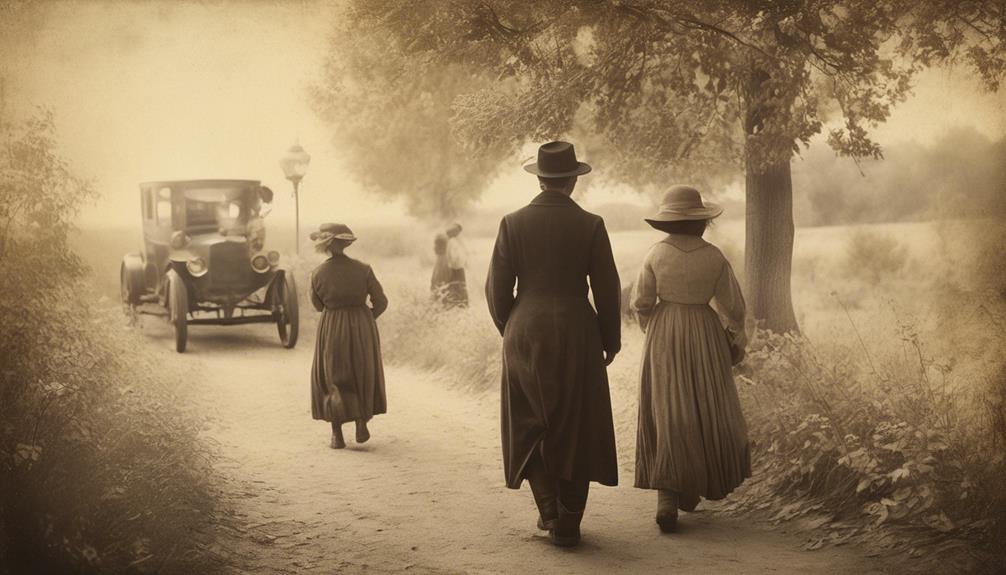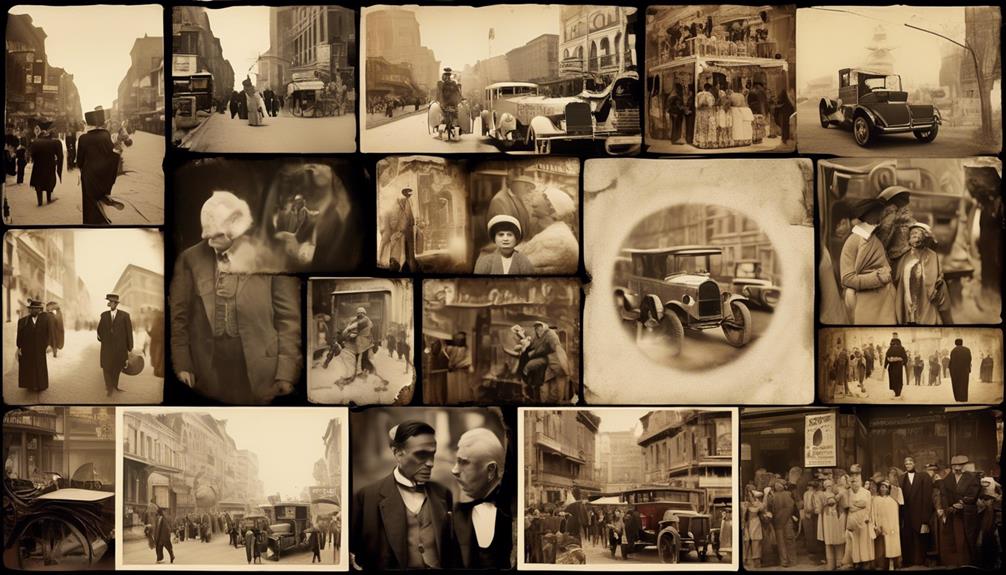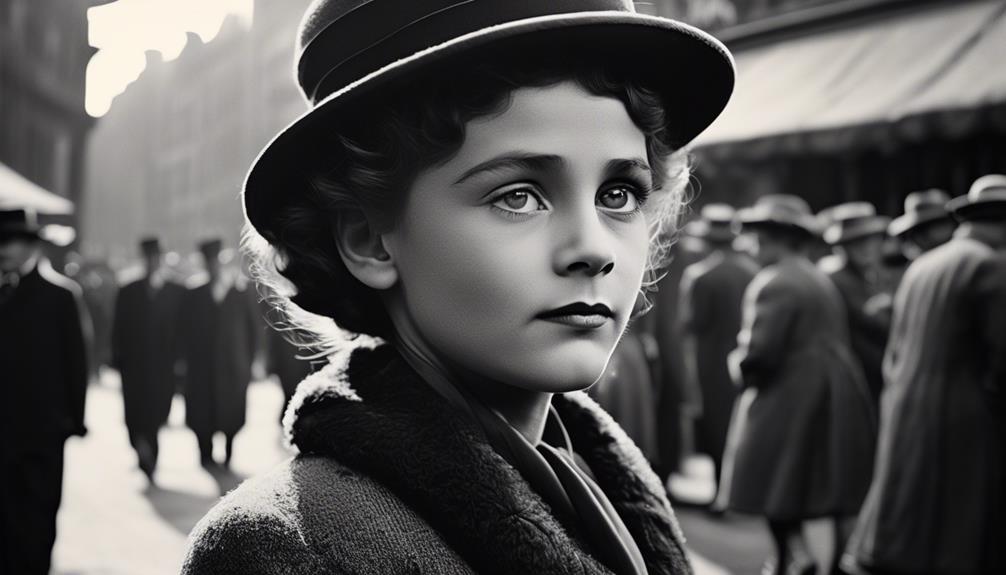Please note this post may contain affiliate links picked by me (Jay) that I have deemed may be of interest or relevant to you the reader of this.
These links do not affect the cost of the thing if you decide to purchase but i may get a little money if you choose to purchase.
For more information on my affiliate link policy click here.
Have you ever wondered how the great photographers of the past captured such captivating images that continue to inspire us today?
As I began my exploration of the world of photography, I stumbled upon a theory that suggests there are five historical movements that hold the key to unlocking a fresh wave of inspiration.
Pictorialism, Surrealism, Modernism, Documentary Photography, and Street Photography – these movements have left an indelible mark on the art of photography and offer a wealth of knowledge and techniques waiting to be discovered.
So, join me on this journey as we delve into the fascinating world of these five best historical photography movements and uncover the secrets they hold for our own creative endeavors.
Key Takeaways
- Pictorialism sought to elevate photography to fine art by emphasizing ethereal beauty and soft focus techniques.
- Surrealism used dreamlike imagery to convey irrational and fantastical elements, challenging traditional notions of reality.
- Modernism rejected conventional rules of composition and embraced experimentation, pushing boundaries of representation and embracing abstraction.
- Documentary and street photography capture real-life moments, provide social commentary, and reveal the human experience, creating a visual archive of our history.
Pictorialism
Pictorialism revolutionized the world of photography, infusing it with artistic expression and challenging the boundaries of traditional representation. This movement, which emerged in the late 19th century, sought to elevate photography to the realm of fine art, emphasizing the ethereal beauty of the subject matter and employing soft focus techniques to create dreamlike and emotive images.
Pictorialists believed that photography should transcend mere documentation and capture the imagination of the viewer. They sought to evoke emotions and convey a sense of atmosphere through their images. By intentionally blurring the focus and experimenting with light and shadow, they created a visual language that was distinct from the sharp, realistic style of their contemporaries.
The soft focus techniques used by Pictorialists allowed them to create images that appeared almost painterly in nature. By manipulating the depth of field and intentionally blurring certain elements of the composition, they were able to create a sense of mystery and evoke a mood in their photographs. This aesthetic choice added an element of fantasy and imagination to their work, capturing the attention and imagination of their audience.
Pictorialism opened up new possibilities for artistic expression in photography, challenging the notion that the medium was purely objective and technical. It allowed photographers to create images that weren't bound by the constraints of reality, but instead reflected their own interpretation and vision of the world. This movement laid the foundation for future innovations in photography and continues to inspire and influence photographers today.
Surrealism
As we journey from the ethereal beauty of Pictorialism, we find ourselves immersed in the captivating world of Surrealism, where reality is distorted and dreams come to life. Surrealism emerged in the early 20th century as a response to the chaos and uncertainty of the modern world. This movement sought to challenge traditional notions of reality and explore the depths of the human subconscious.
Surrealist photographers, such as Man Ray and Salvador Dalí, used dreamlike imagery to convey a sense of the irrational and the fantastical. Through their work, they aimed to tap into the hidden realms of the mind, creating images that defied logic and pushed the boundaries of imagination.
To illustrate the power of Surrealism, let's take a look at the following table:
| Photographer | Famous Works |
|---|---|
| Man Ray | "Untitled (Rayograph)"<br>"Le Violon d'Ingres" |
| Salvador Dalí | "The Persistence of Memory"<br>"Swans Reflecting Elephants" |
These photographers used innovative techniques such as double exposure, photomontage, and solarization to create visually striking and thought-provoking images. Their work challenged the viewer to question the nature of reality and embrace the strange and unexpected.
Modernism
Modernism revolutionized the world of photography, pushing boundaries and challenging traditional norms. It was a movement that sparked a new wave of creativity and innovation, leaving an indelible mark on the art form.
Here are four reasons why modernism continues to inspire and captivate audiences today:
- Influence on contemporary art: Modernist photographers rejected the conventional rules of composition and embraced experimentation. They sought to capture the essence of the modern world, often focusing on urban landscapes, industrialization, and the human experience. Their bold and abstract images paved the way for contemporary photographers to explore new realms of expression.
- Relationship with technology: Modernist photographers were at the forefront of technological advancements in the medium. They embraced new cameras, lenses, and printing techniques, allowing them to push the boundaries of what was possible. This symbiotic relationship between technology and art continues to shape photography today, as artists constantly seek new ways to capture and manipulate images.
- Breaking free from tradition: Modernist photographers challenged the established norms of their time, rejecting the notion that photography should merely mimic the other visual arts. They embraced the medium's unique qualities and sought to create a new visual language. Their revolutionary approach to photography paved the way for future generations to break free from tradition and explore their own artistic visions.
- Embracing abstraction and subjectivity: Modernist photographers pushed the boundaries of representation, moving away from literal depictions of reality. They sought to capture the essence of a subject rather than its physical appearance, often using techniques such as multiple exposures, close-ups, and unconventional angles. This emphasis on abstraction and subjectivity continues to inspire photographers today, encouraging them to explore the deeper meaning behind their images.
Modernism remains a powerful force in the world of photography, influencing contemporary art and shaping the relationship between technology and creativity. Its bold and innovative approach continues to inspire photographers to push the boundaries and create images that challenge our perceptions of the world.
Documentary Photography
Documentary photography captures real-life moments and tells powerful stories through the lens of a camera. It's a genre that goes beyond mere aesthetics, aiming to provide social commentary and create a lasting impact. Through photojournalism, documentary photographers shed light on important social issues, giving a voice to the marginalized and raising awareness about the world we live in.
Documentary photography, as a form of visual storytelling, has the power to inspire change and challenge societal norms. It captures the raw emotions and realities of everyday life, offering a glimpse into the lives of people and communities that may otherwise go unnoticed. By documenting the world as it is, documentary photographers create a visual archive of our history, preserving moments that would otherwise be forgotten.
What sets documentary photography apart is its ability to convey truth and authenticity. It captures the essence of a moment, revealing the human experience in all its complexity. Whether it's capturing the struggles of individuals in impoverished communities or the resilience of activists fighting for justice, documentary photography allows us to see the world through a different lens.
In a world saturated with images, documentary photography stands as a powerful tool for social change. It challenges us to confront uncomfortable truths and question the status quo. It prompts us to engage with the world around us and inspires us to take action. Through its visual storytelling, documentary photography has the potential to create a more empathetic and understanding society. It's a reminder that every photograph has the power to make a difference.
Street Photography
Street photography captures the vibrant essence of urban life, revealing the beauty and authenticity found in the everyday moments of city dwellers. It's an art form that allows us to witness the raw emotions, the hidden stories, and the pulsating energy that permeates the streets.
Here are four reasons why street photography continues to inspire and innovate:
- Urban Landscapes: Street photography invites us to explore the dynamic and ever-changing landscapes of our cities. From towering skyscrapers to colorful graffiti-filled alleyways, each frame captures the unique personality of a place. It challenges us to see the beauty in the chaos and find order within the urban jungle.
- Candid Moments: Street photography freezes fleeting moments in time, preserving them for eternity. It captures the laughter, the tears, the gestures that define the human experience. In a world that often feels staged and filtered, street photography reminds us of the genuine connections and emotions that unfold in the streets.
- Intimacy and Connection: Through the lens of a street photographer, we become witnesses to the intimate interactions between strangers. We see the laughter shared between friends, the tender touch of a mother and child, and the conversations that bridge divides. Street photography reminds us of our shared humanity, breaking down the barriers that separate us.
- Innovation and Experimentation: Street photography is a constantly evolving genre, pushing boundaries and embracing new techniques. From black and white classics to experimental double exposures, street photographers are always finding fresh ways to capture the essence of the streets. It encourages us to think outside the box, to experiment with different perspectives, and to redefine what's possible in photography.
Frequently Asked Questions
What Are Some Key Characteristics of Pictorialism That Differentiate It From Other Photography Movements?
Pictorialism, an artistic movement in photography, is characterized by its unique use of soft focus. This sets it apart from other photography movements, as it aims to create a more dreamlike and impressionistic quality in the images. By intentionally blurring the edges and emphasizing mood over sharpness, pictorialists sought to elevate photography to the level of fine art.
This approach can be a great source of inspiration for those looking to explore innovative and creative techniques in their own photography.
How Did Surrealism Influence the Development of Photography as an Artistic Medium?
Surrealism has had a profound influence on the development of photography as an artistic medium. The movement sought to explore the influence of dreams and the subconscious on art, and photography became a powerful tool to capture these ethereal and otherworldly elements.
Surreal photographers embraced experimental techniques, such as double exposure and photomontage, to create captivating and innovative images. Through their imaginative and thought-provoking work, surrealists pushed the boundaries of what photography could achieve, inspiring future generations to think outside the box and embrace new possibilities.
What Were Some of the Major Themes and Subjects Explored in Modernist Photography?
In modernist photography, major themes and subjects explored included abstraction and experimentation. It was an exciting time in the world of photography, as artists pushed the boundaries and challenged traditional norms.
Through abstract compositions and experimental techniques, they captured the essence of the modern world and its rapid changes. The results were innovative and thought-provoking images that continue to inspire and influence photographers today.
Exploring the works of modernist photographers can provide fresh inspiration for those seeking to break new ground in their own artistic journey.
How Did Documentary Photography Contribute to the Social and Political Awareness of the Time?
Documentary photography, with its raw power and unfiltered storytelling, is like a lightning bolt striking society's conscience. It has the ability to ignite social and political awareness like nothing else.
The influence of photojournalism and the impact of documentary photography on social change can't be overstated. Through capturing the harsh realities of the world, it forces us to confront uncomfortable truths, sparking conversations and inspiring action.
It's a catalyst for change, a visual call to arms that demands justice and progress.
What Distinguishes Street Photography From Other Genres, and What Are Some Notable Street Photographers From Different Eras?
Notable street photographers capture the essence of everyday life with their unique perspectives. They immerse themselves in the bustling streets, capturing fleeting moments that often go unnoticed. Street photography stands out from other genres because of its raw and unposed nature. It brings a sense of authenticity to the art form.
Some notable street photographers from different eras include Henri Cartier-Bresson, Garry Winogrand, and Vivian Maier. Their work has had a significant impact on contemporary art, inspiring countless photographers to explore the beauty and chaos of the streets.
Conclusion
In the vast realm of photography, historical movements have acted as guiding stars, illuminating new paths for artists to explore. Pictorialism, Surrealism, Modernism, Documentary Photography, and Street Photography are the five best movements that have left an indelible mark on the art form.
Like a symphony composed by masterful hands, these movements have harmonized history, culture, and human emotions, inviting us to witness the world through the lens of passion and creativity.
Let their whispers on the wind inspire us to capture our own unique stories and create a legacy for future generations to cherish.


